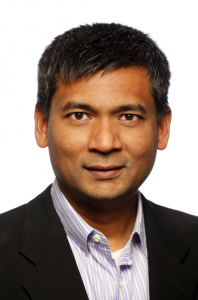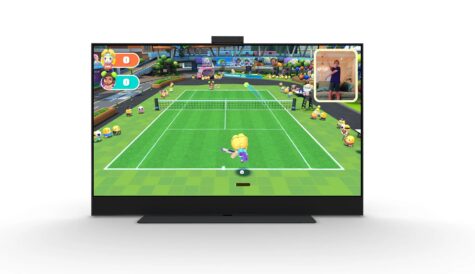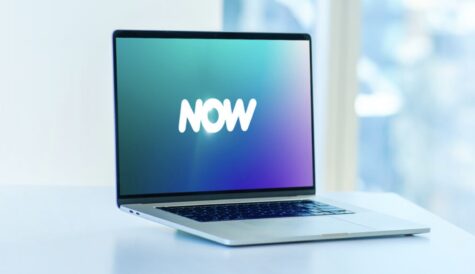Cable Congress 2015 interviews: Balan Nair, Liberty Global
With UK unit Virgin Media’s recent announcement of a £3 billion network investment and network extensions and upgrades planned elsewhere, Liberty Global is leading the charge for cable’s bid to be the provider of choice for connected services in Europe. CTO Balan Nair talked to DTVE about the company’s priorities for the year ahead.
Liberty Global has been at the forefront of the emergence of cable as a major force in European telecommunications and media since its emergence in the 1990s – notably as the pioneer of the triple-play concept in Europe.
Having acquired a number of heterogeneous networks over the years, most recently adding Virgin Media and Ziggo to its long list of cable assets, the company is now launching the latest phase of its ongoing investment in advanced cable technology.
Liberty Global’s willingness to invest in infrastructure to match and exceed the bandwidth available to telecom competitors was most recently evident in UK subsidiary Virgin Media’s announcement that it would invest £3 billion in Project Lightning, a plan to extend its network reach to two thirds of UK homes and generate up to £1 billion in incremental revenue by 2020. But Liberty Global is also investing in expanding its footprint elsewhere in Europe as well as upgrading its existing plant.
“My priority for the next few years is to build out more homes passed,” says Liberty Global chief technology officer Balan Nair, who has been responsible for overseeing the company’s global network, IT, and technology operations as well as looking after new product development and overseeing global procurement, since he joined from AOL in 2007.
Nair says Liberty Global, which is currently adding between 700,000-800,000 homes to its footprint each year, will invest in fibre-to-the-home networks in new-build areas while extending its HFC plant to reach new homes adjacent to existing networks. He says the Virgin Media Project Lightning announcement will be the first of a number of major network investment projects by the operator.
In addition to extending the reach of Liberty Global’s network, Nair is committed to upgrading its existing plant to provide additional bandwidth to subscribers.
The key areas of focus for upgrading existing networks are to extend the bandwidth of the plant to 1.2GHz, and to deploy DOCSIS 3.1. (These two developments are closely linked. While DOCSIS 3.1 is compatible with cable’s existing 1GHz RF bandwidth, an expansion to 1.2GHz provides space for full legacy HFC bandwidth plus an additional 200MHz sub-band for the new version of the DOCSIS standard, enabling the deployment of very high-speed broadband services).
“This will enable us to offer higher speeds,” says Nair. “We already offer upwards of 100Mbps on every network that we run but we can go much higher. It will enable us to utilize our capacity better.”
In addition to investing in increasing the available bandwidth on networks, Liberty Global is planning to deploy other technologies such as HEVC/H.265 decoding on its set-tops to enable more efficient use of bandwidth. It will also split nodes further to provide greater efficiency for unicast traffic. Nair says that Liberty Global can more than match the capabilities of its rivals’ networks. “We are going fibre-deep ourselves – in many cases deeper than the telcos. The only thing deeper is fibre-to-the-home, and we are not convinced that deploying fibre for the last 50 metres makes sense today,” he says.
Advanced TV
Nair says that demand for higher speeds will be driven by a range of new applications such as e-healthcare. However, cable customers already using the bandwidth available to consumer high-definition video on-demand, including to the main TV screen. One of Liberty Global’s main area of focus for the past two or three years has been the rollout of its Horizon advanced TV service.
“Horizon was built to optimise TV for a world where everyone wants content on-demand,” says Nair. “Of course you still have live sport and so on but more and more customers want to view video on-demand. They need to be able to search, with features such as poster art and so on, and the platform was built to support this.”
After launching Horizon in the Netherlands, Germany, Switzerland and Austria, along with a wider deployment of its sister TV Everywhere app, Horizon Go, Liberty Global this year launched the latest TV version of the platform in Poland. Unlike previous iterations, the Polish version is based on the Reference Design Kit (RDK) software platform, the Comcast-originated initiative designed to provide a common platform for advanced TV consumer premises equipment. Following the Polish launch, Liberty Global plans to roll the platform – using cloud-based delivery as well as the RDK platform – to other markets in its central and eastern European footprint.
“In future – in Poland and in other countries – the whole user interface will be delivered from the cloud,” says Nair, who adds that on-demand video and ultimately linear TV will all ultimately be migrated from the legacy DVB-C platform to IP.
“We will move more and more to the cloud,” he says. “We are moving storage to the cloud, and we are moving more logic into the cloud, because it is probably the most efficient way to do things. You will always have some piece of hardware in the home but it will become a smaller and smaller part of our capital programme.”
The new iteration of Horizon – RDK-based, with a growing array of features delivered from the cloud – will also be rolled out across western European markets as well.
“It would make sense to harmonise the TV platform,” says Nair, who adds that existing Horizon boxes could be migrated to RDK relatively easily. “We have adapted RDK to European requirements and we feel good about it. To consumers the process [of migration] will be transparent.”
Nair says that the chief benefit of the RDK to Liberty Global is that it will enable the industry to deploy a single platform with massive scale, just as it did with the DOCSIS cable broadband standard, which enabled cable to create a business entirely from scratch. “The reason we took the RDK path is that, while we did see the cost-efficiency and time-to-market benefits, we wanted to drive scale with this new ecosystem,” he says. “When Comcast funded the initiative to embed a lot of software directly on the chip, [Liberty Global president and CEO] Mike Fries considered it a DOCSIS moment, where the industry rallies around a single technology.”
Quad-play
Liberty Global’s investment in major initiatives in fixed broadband and TV are clearly priority areas, but this does not mean that the company – or Nair – is neglecting the other major battleground for multi-play service providers: mobile.
“We believe in mobile and we are the owner of the largest MVNO out there. I think mobile voice and data will be part of the seamless connectivity consumers are looking for,” says Nair.
However, with its fixed-line heritage, Liberty Global has to move into mobile in a way that is economically and technically viable. For Nair, this means building infrastructure where it makes sense, while relying on third parties for other elements. “The most efficient way is to build out your own core infrastructure but lease the towers,” he says, adding that he believes fixed operators are better-placed to move into mobile than mobile operators are to move into fixed services, with the key battleground likely to be between cable and telecom service providers with fixed network assets. “Mobile operators that want into fixed-line services will have to think hard how to do it,” he says.
Nair says that investment in a mobile play is not merely about delivering a quad-play bundle from a single provider and competing on price. The quad-play will entail much more, he says. “There will be service-level convergence with complete integration of fixed and mobile services and that is why we are building out our networks,” he says.
Beyond offering a range of fixed and mobile services, cable and other telecommunications operators are looking to become providers of seamless connectivity both within and outside the home, enabling them to establish a position as the provider of choice for consumers ahead of the anticipated flowering of applications and services unleashed by the proliferation of a much wider range of internet-connected domestic appliances – the Internet of Things. Other companies – including consumer electronics giants such as Apple and Samsung, and internet companies such as Google and Facebook – are also actively preparing for a time when internet connectivity is truly ubiquitous. For Nair, the cable business will clearly play a significant role, and defining cable’s actual and potential competitors and collaborators will be one of the tasks that lie ahead.
“In any business we look around to see who out competitors are, but you have to be careful not to incorrectly classify those competitors. We plan on doing a lot of things that can make [those companies] more valuable to their customers,” he says. “What we certainly do is offer connectivity to the home, and within the home we are the connectivity provider of choice.”




